Oct. 19, 2018
Prelims Pointers
Oct. 19, 2018

About NDMA:
- Parent body: Ministry of Home Affairs.
- Primary Objective: To coordinate response to natural or man-made disasters and for capacity-building in disaster resiliency and crisis response.
- HQ:
- Functions:
- It is responsible for framing policies, laying down guidelines and best-practices and coordinating with the State Disaster Management Authorities (SDMAs) to ensure a holistic and distributed approach to disaster management.
- Collaborates with the Lal Bahadur Shastri National Academy of Administration and Sardar Vallabhbhai Patel National Police Academy to impart training to administration and police officers in planning and incident response.
- It monitors and develops guidelines for the local Firefighting Services across the country.
- It collaborates with the Ministry of Health and Family Welfare in developing emergency health and ambulance services.
- It is responsible for framing policies, laying down guidelines and best-practices and coordinating with the State Disaster Management Authorities (SDMAs) to ensure a holistic and distributed approach to disaster management.
- Origin: NDMA was established through the Disaster Management Act enacted by the Government of India in 2005.
- Organisation setup:
- The Prime Minister is the ex-officio chairperson of the NDMA, who chairs a 9-member board.
- The remainder of the board consists of members nominated based on their expertise in areas such as, planning, infrastructure management, communications, meteorology etc.
- The day-to-day management of the agency is overseen by the office of the Vice Chair.
- The Prime Minister is the ex-officio chairperson of the NDMA, who chairs a 9-member board.
Prelims Pointers
Oct. 19, 2018

About:
- Full name: SAFAR stands for System of Air Quality and Weather Forecasting.
- Objective:
- To provide Real-time air quality index on 24x7 basis with colour coding along with 72-hour advance weather forecast
- To issue Health advisory to prepare citizens well in advance.
- To provide Real-time air quality index on 24x7 basis with colour coding along with 72-hour advance weather forecast
- Key Components:
- Development of emission inventory of air pollutants and defining air quality index (AQI) for India.
- Network of Air Quality Monitoring Stations (AQMS) and Automatic Weather Stations (AWS).
- LED/LCD screens located at different locations in the city to display air pollution and weather information.
- Development of emission inventory of air pollutants and defining air quality index (AQI) for India.
- Parameters monitored:
- Pollutants: PM1, PM2.5, PM10, Ozone, CO, NOx (NO, NO2), SO2, BC, Methane (CH4), Non-methane hydrocarbons (NMHC), Black Carbon, VOC’s, Benzene and Mercury.
- Meteorological Parameters: UV Radiation, Rainfall, Temperature, Humidity, Wind speed, Wind direction, solar radiation.
- Pollutants: PM1, PM2.5, PM10, Ozone, CO, NOx (NO, NO2), SO2, BC, Methane (CH4), Non-methane hydrocarbons (NMHC), Black Carbon, VOC’s, Benzene and Mercury.
- Agencies involved: It was indigenously developed by Indian Institute of Tropical Meteorology, Pune and is run by India Meteorological Department (IMD).
- Areas covered: It is being implemented in 4 cities: Delhi, Pune, Mumbai and Ahmedabad.
- SAFAR project was first set up in 2010 in Delhi for the Commonwealth Games.
- It was subsequently launched in Pune (2013), Mumbai (2015) and Ahmedabad (2017).
- SAFAR project was first set up in 2010 in Delhi for the Commonwealth Games.
Prelims Pointers
Oct. 19, 2018

About:
- For women whose uterus is not healthy, or who do not have one, a transplant is the newest form of infertility treatment. In India, about 17% of all women face issues relating to infertility, and the reason is related to the uterus in 20% of such cases.
- The transplanted uterus is generally intended to be removed after the woman has gone through one or two childbirths.
- Normal reproduction is not possible with a transplanted uterus. Therefore, a transplant makes sense only because of the success of the technology of in vitro fertilisation (outside the body).
- The childbirth happens through surgical intervention; the woman experiences no labour pain.
- In the earliest cases, doctors took almost 13 hours to retrieve the uterus, because they performed open surgery. With laparoscopic intervention, the time has now come down to about six hours.
Global scenario:
- The first successful uterine transplant was performed in Saudi Arabia in 2002 but did not result in pregnancy.
- Since then, there have been 27 such transplants, with only 11 women going on to have successful deliveries. Nine of the other 11 babies were born in Sweden, and two in the US.
- The first birth after a transplant, in 2014, happened in Sweden.
Recent incidence:
- Meenakshi Valand, the woman who delivered the child, had a scarred uterus (Asherman’s syndrome) due to multiple abortions and cases of stillbirths. It was unable to hold another foetus.
- Her mother donated the uterus. In May 2017, Meenakshi Valand underwent the country’s first uterine transplants.
- In April 2018, an embryo was transferred into Meenakshi’s womb and resulted in a pregnancy.
Prelims Pointers
Oct. 19, 2018

About:
- Input Credit means at the time of paying tax on sales, you can reduce the tax you have already paid on purchases.
- Input Tax Credit (ITC) means reducing the taxes paid on inputs from taxes to be paid on output. When any supply of services or goods is supplied to a taxable person, the GST charged is known as Input Tax.
- The concept is not entirely new as it already existed under the pre-GST indirect taxes regime (service tax, VAT and excise duty). Now its scope has been widened under GST.
Prelims Pointers
Oct. 19, 2018

About:
- Data localisation is a concept that the personal data of a country’s residents should be processed and stored in that country.
- Some directives may restrict flow entirely, while others more leniently allow for conditional data sharing or data mirroring – in which only a copy has to be stored in the country.
- As of now, much of cross-border data transfer is governed by individual bilateral “mutual legal assistance treaties” (MLATs).
- Arguments for data localisation:
- A common argument of government officials is that localisation will help Indian law enforcement access data.
- This especially gained prominence earlier this year, when a spate of lynching’s across the country was linked to WhatsApp rumours. WhatsApp’s firm stance on encrypted content frustrated government officials.
- A common argument of government officials is that localisation will help Indian law enforcement access data.
- B N Srikrishna committee:
- In late July, a data protection draft law by a committee headed by retired Justice B N Srikrishna recommended that all personal data of Indians have at least one copy in India.
- A subset of that data, labelled critical personal data, must be stored and processed only in India.
- In late July, a data protection draft law by a committee headed by retired Justice B N Srikrishna recommended that all personal data of Indians have at least one copy in India.
- RBI Deadline:
- In early April, the RBI issued a circular mandating that payment data be stored only in India by October 15. This covered everyone from Mastercard and Visa to WhatsApp Payments and PayTM.
- Currently, the RBI has not instituted any fines for those who have missed the deadline but is seeking schedules of pending data transfers to India.
- In early April, the RBI issued a circular mandating that payment data be stored only in India by October 15. This covered everyone from Mastercard and Visa to WhatsApp Payments and PayTM.
Prelims Pointers
Oct. 19, 2018

About:
- Globally, Switzerland remains the richest nation in the world in terms of wealth per adult in mid-2018, followed by Australia ($ 411,060).
- India created 7,300 more millionaires during the 12 months to mid-2018, taking the total number of dollar-millionaires to 343,000, who are collectively worth around $6 trillion. However, the wealth per adult stayed at $ 7,020 as against $47,810 in China (Rs 35.14 lakh).
Prelims Pointers
Oct. 19, 2018

About:
- Anti-Dumping Duty: These are additional import duties which are imposed to check dumping. Dumping refers to export/sale of a commodity in foreign country by a company at a price which is lower than domestic market price. As per WTO Norms, Member countries can impose Anti-Dumping duty if:
- Exporter is dumping goods &
- It is adversely affecting domestic industries.
- Exporter is dumping goods &
- Counter-veiling duty: It is an additional import duty which is imposed to counter or offset the impact of Indirect tax differential or subsidy provided by the exporting country’s government.
Prelims Pointers
Oct. 19, 2018

About:
- The Central Board of Secondary Education (CBSE) is a Board of Education for public and private schools, under the Union Government of India.
- Administration: The Board functions under the overall supervision of the Controlling Authority which is vested with the Secretary (School Education & Literacy), Ministry of Human Resource Development, Government of India.
- HQ:
- Historical Background:
- UP Board of High School and Intermediate Education was the first Board set up in 1921. It has under its jurisdiction Rajputana, Central India and Gwalior.
- In 1929, the then Government of India set up a joint Board in 1929 for all the areas which was named as the 'Board of High School and Intermediate Education, Rajputana'. This included Ajmer, Merwara, Central India and Gwalior.
- In 1952, the constitution of the Board was amended wherein its jurisdiction was extended to part-C and Part-D territories and the Board was given its present name 'Central Board of Secondary Education'.
- It was in the year 1962 finally that the Board was reconstituted.
- UP Board of High School and Intermediate Education was the first Board set up in 1921. It has under its jurisdiction Rajputana, Central India and Gwalior.
- Main objectives of CBSE are:
- To define appropriate approaches of academic activities to provide education to all children.
- To monitor the quality of various academic activities.
- To adapt and innovate methods to achieve academic excellence in conformity with psychological, pedagogical and social principles.
- To define appropriate approaches of academic activities to provide education to all children.
Prelims Pointers
Oct. 19, 2018

About:
- Exercise 'DHARMA GUARDIAN-2018' will be yet another step in deepening strategic ties including closer defence cooperation between the two countries.
- The Indian contingent will be represented by 6/1 GORKHA RIFLES while the Japanese contingent will be represented by 32 Infantry Regiment of the Japanese Ground Self Defence Force.
- During the 14-day long exercise, due emphasis will be laid on increasing interoperability between forces from both countries.
Prelims Pointers
Oct. 19, 2018

About:
- Vijayadashami is a major Hindu festival celebrated at the end of Navratri every year i.e. on the tenth day in the Hindu calendar month of Ashvin.
- The festival also starts the preparation for Diwali, which is celebrated twenty days after the Vijayadashami.
- It is observed for different reasons and celebrated differently in various parts of the Indian subcontinent.
|
REGION |
REASON FOR OBSERVANCE |
CELEBRATIONS |
|
|
EASTERN & NORTH-EASTERN INDIA |
It marks the end of Durga Puja.
|
It remembers goddess Durga's victory over the buffalo demon Mahishasura. |
· It includes processions to a river or ocean front that carry clay statues of Durga, Lakshmi, Saraswati, Ganesha and Kartikeya, accompanied by music and chants. · After this the statutes are immersed into the water. |
|
NORTHERN, SOUTHERN & WESTERN INDIA |
It marks the end of "Ramlila"
|
It remembers God Rama's victory over the demon Ravana. |
· Here the festival is also known as Dasara or Dussehra. · The towering effigies of Ravana symbolizing the evil are burnt with fireworks marking evil's destruction. · The performance arts tradition during the Dussehra festival was inscribed by UNESCO as one of the "Intangible Cultural Heritage of Humanity" in 2008. |
Oct. 18, 2018
Prelims Pointers
Oct. 18, 2018

About:
- A large commercial drone Feihong-98 (FH-98) developed and modified by the China Academy of Aerospace Electronics Technology made a test flight in north China’s Inner Mongolia autonomous region.
- Feihong-98 (FH-98) is now the world’s largest unmanned transport aircraft, with a maximum payload of up to 1.5 tonnes. It was adapted from the prototype of the Shifei Y5B, a China-developed transport plane.
- The FH-98 features simple take-off and landing, simple operation, advanced technology, at an affordable cost.
Prelims Pointers
Oct. 18, 2018

About:
- Currently, the compensatory afforestation (CA) funds, amounting to roughly Rs 50,000 crore, are with the ad hoc Compensatory Afforestation Fund Management and Planning Authority (CAMPA).
- The ad hoc CAMPA body was created by the order of Supreme Court in 2009. The CAMPA was created as National Advisory Council under the chairmanship of the environment minister for monitoring, technical assistance and evaluation of compensatory afforestation activities.
- Currently, The Ministry of Environment, Forest and Climate Change (MoEFCC) is in deliberation with the Ministry of Finance over the future of compensatory afforestation (CA) funds collected by the Centre.
The Recent order by Supreme Court came after realising that the Punjab government took Rs. 1.11 crore from CAMPA funds and to pay its lawyers and other legal expenses.
Prelims Pointers
Oct. 18, 2018

About:
- The Deep Submergence Rescue Vehicle (DSRV), which is operated by a crew of three, can rescue 14 personnel from a disabled submarine at one time.
- The ongoing trials will also include air transportation of the system by the IAF’s heavy-lift transport aircraft.
- Completion of the trials will put the Indian Navy into a small league of world navies that have integral submarine rescue capability.
Prelims Pointers
Oct. 18, 2018

About:
- A kamikazi drone, also called a suicide drone or, more formally, a loitering munition, is an unmanned aerial vehicle that is designed to self-destruct after serving its purpose.
- It can be effective in room intervention during counter-terrorism operations — a drone breaking in and exploding will involve a lower risk of casualty than jawans entering physically.
- A loitering munition is portable, making it ideal for ground units such as NSG. While some come with a warhead, in others the drone itself is the main munition.
- Equipped with high-resolution cameras, it can also home in on radio emissions, or be flown manually by remote control. If a target is not engaged, the drone will return and land itself at the base.
- The name “loitering” derives from a defining characteristic: the ability to “loiter” in the air for an extended period of time before striking, giving the targeter, time to decide when and what to strike.
Prelims Pointers
Oct. 18, 2018

About:
- Background: The Man Booker Prize was established in 1969.
- Objective: to promote the finest in fiction by rewarding the best novel of the year written in English.
- Eligibility:
- The Man Booker Prize awards any novel originally written in English and published in the UK and Ireland in the year of the prize, regardless of the nationality of their author.
- The novel must be an original work in English (not a translation)
- It must be published by a registered UK or Irish imprint; self-published novels are not eligible.
- The Man Booker Prize awards any novel originally written in English and published in the UK and Ireland in the year of the prize, regardless of the nationality of their author.
- Prize Money: The winner receives £50,000 as well as the £2,500 awarded to each of the shortlisted authors.
- Organizations involved:
- Man Group: Man Group is an active investment management firm founded in 1783. It has sponsored the Man Booker Prize since 2002
- The Booker Prize Foundation: It is a registered charity established in 2002. Since then it has been responsible for the award of the Man Booker Prize for Fiction, and for the Man Booker International Prize since its inauguration in 2005.
- Man Group: Man Group is an active investment management firm founded in 1783. It has sponsored the Man Booker Prize since 2002
2018 prize:
- 2018 marks the 50th anniversary of the Man Booker Prize.
- Burns is the first writer from Northern Ireland to win the 50,000-pound ($66,000) prize.
Prelims Pointers
Oct. 18, 2018

About:
- Council of Scientific and Industrial Research, Indian Institute of Toxicology Research (CSIR-IITR), Lucknow has developed an innovative technology for “Drinking Water Disinfection System” with Trade name “OneerTM”.
- It is useful for continuous treatment of water and eliminates all disease-causing pathogens such as virus, bacteria, fungi, protozoa and cyst to provide safe drinking wateras per National and International standards.
Prelims Pointers
Oct. 18, 2018

About:
- UN staff struggling with anxiety, depression or post-traumatic stress disorder have reported feeling isolated and ashamed, with no one to turn to for help.
- Mental health diagnoses account for almost a quarter of all days lost to sick leave, and were the leading cause of disability pensions.
- Reducing stigma is the top priority of the strategy as the staff would not feel prepared to seek help or disclose their feelings until stigma was overcome.
- The strategy also underscores the need to care for each other, and to reach out to colleagues who may be in distress.
- Also, it is important to educate about the early warning signs of mental illness.
Prelims Pointers
Oct. 18, 2018

About:
- The documents have been designed to supplement efforts for prevention and treatment services of NCDs related to Cardiac Sciences, Oncology, and Pulmonary Sciences at the district hospitals especially in tier 2 & 3 cities.
- The documents have been developed by NITI Aayog in partnership with the Ministry of Health and Family Welfare, State Governments and representatives from the healthcare industry.
- The guidelines come in the backdrop of the fact that the contribution of NCDs to the overall disease burden in the country has increased over the years as many district hospitals focus mainly on communicable diseases and reproductive and child health.
Salient features:
- PPP Units to be established in District Hospitals
- Model covers prevention and treatment of 3 Non-Communicable Diseases viz. Cardio Vascular diseases, Cancers and Pulmonary diseases.
- Scope of services:
- Oncology: Palliative care, Medicinal /Conservative Management (including Chemotherapy, Growth Inhibitors & Hormone Therapy)
- Pulmonology: Emergency Management of acute syndromes, Medicinal/Conservative Management for COPD, Bronchial Asthma and Bronchoscopy.
- Cardiology: Emergency Management of acute syndromes, Medicinal/Conservative Management and Angiography/Angioplasty.
- Oncology: Palliative care, Medicinal /Conservative Management (including Chemotherapy, Growth Inhibitors & Hormone Therapy)
- All these services in PPP facility to be offered by a Single partner or a single consortium of private partners.
- Private partner to invest in upgrading/building and equipping the facility and responsible for operational management and service delivery.
- Government to provide physical space & other infrastructure in ‘as-is where-is’ condition, provide support facilities and hospital amenities.
- User Fee to be fixed as the package rates discovered periodically through States/ Centre Insurance Scheme(s). States which do not have such insurance packages, could use CGHS package rates for period when such insurance rates are not available.
- Viability Gap Funding (VGF) to be provided by the government(s) should be used as the parameter for bidding in the project.
Prelims Pointers
Oct. 18, 2018

About:
- The Rural Development Ministry has done a gap analysis of more than 3.5 lakh villages, in more than 1.6 lakh panchayats under the Mission Antyodaya convergence scheme.
- A total of 97 Gram Panchayats appear in the top 10 ranks in the list released by the Ministry of Rural Development.
- Best Gram Panchayat in the country: Kuligod (in Belagavi district of Karnataka) is the most developed village in the country under the Antyodaya scheme of the Centre. It is located on the banks of the perennial Ghataprabha river.
- The highest number of villages in the top 10 ranks is in Andhra Pradesh while Tamil Nadu stands second.
- Indicators: The ranking is based on 6 indicators which are infrastructure, health, women empowerment, economic development, basic village parameters and financial inclusion.
Prelims Pointers
Oct. 18, 2018

About:
- This festival is celebrated for nine days during Durga Navratri in Telangana.
- ‘Bathuku’means the life and Amma means the Mother. On a whole, it is a festival to worship the ‘Life Giver’, the universal energy - Goddess Shakti.
- Celebrations:
- Bathukamma is made up of seven concentric layers of flowers that are arranged in a pyramid shape. The arrangement signifies the mother goddess.
- As it is a festival of women, they dance around it singing Bathukamma Paatalu (i.e. songs praising Bathukamma).
- The Goddess is worshipped for the nine days and on the tenth day of the celebration, the goddess is immersed in the local waters after performing the rituals.
- Bathukamma is made up of seven concentric layers of flowers that are arranged in a pyramid shape. The arrangement signifies the mother goddess.
Oct. 17, 2018
Prelims Pointers
Oct. 17, 2018

About:
- Homeopathy is an alternative medical system that was developed in 1796 by Samuel Hahnemann in Germany.
- Its underlying theories are as follows:
- Like cures like: A substance taken in small amounts will cure the same symptoms it causes if taken in large amounts.
- Law of minimum dose: The lower the dose of the medication, the greater its effectiveness.
- Homeopathy treats each person as a unique individual. Treatments are “individualized” or tailored to each person.
- Like cures like: A substance taken in small amounts will cure the same symptoms it causes if taken in large amounts.
Prelims Pointers
Oct. 17, 2018

About:
- World Food Day is celebrated every year around the world on 16 October in honour of the date of the founding of the Food and Agriculture Organization (FAO) of the United Nations in 1945.
- View of FAO on global hunger:
- After a period of decline, world hunger is on the rise again. According to the latest FAO 2018 State of Food Security and Nutrition in the World report, over 820 million people are suffering chronic undernourishment.
- While millions go hungry, 672 million people suffer from obesity, and a further 1.3 billion are overweight.
- Conflict, extreme weather events linked to climate change, economic slowdown and rapidly increasing overweight and obesity levels are reversing progress made in the fight against hunger and malnutrition.
- 70 percent of the world's poor live in rural areaswhere people’s lives depend on agriculture, fisheries or forestry. That’s why Zero hunger calls for a transformation of rural economy.
- After a period of decline, world hunger is on the rise again. According to the latest FAO 2018 State of Food Security and Nutrition in the World report, over 820 million people are suffering chronic undernourishment.
Prelims Pointers
Oct. 17, 2018

About:
- Objective: To make available quality generic medicines at affordable prices to all.
- Implementing agency: Bureau of Pharma PSUs of India (BPPI), under the administrative control of the Department of Pharmaceuticals, Ministry of Chemicals & Fertilizers, Government of India.
- History:
- Jan Aushadhi Scheme was launched by the Department of Pharmaceuticals in 2008 across the country.
- In 2015, the Jan Aushadhi Scheme was revamped as Pradhan Mantri Jan Aushadhi Yojana (PMJAY).
- In 2016, it was again renamed as Pradhan Mantri Bhartiya Janaushadhi Pariyojana (PMBJP).
- Jan Aushadhi Scheme was launched by the Department of Pharmaceuticals in 2008 across the country.
- The Salient features of the Jan Aushadhi Scheme are:
- Making quality medicines available at affordable prices for all, particularly for the poor and disadvantaged, through specialized outlets called the Jan Aushadhi Stores (JAS).
- To ensure quality supply of generic medicines from the Central Public Sector Undertaking (CPSUs) and Good manufacturing practices (GMP) compliant manufacturers in the private sector.
- To ensure prescription of generic medicines by the Government doctors with proactive support from the State Governments.
- Making quality medicines available at affordable prices for all, particularly for the poor and disadvantaged, through specialized outlets called the Jan Aushadhi Stores (JAS).
Prelims Pointers
Oct. 17, 2018

About:
- The Goa Maritime Symposium – 2018 is the second edition of the Goa Maritime Symposium (GSM).
- Objective: It is a forum towards fostering friendly relations with the maritime neighbours in the Indian Ocean Region (IOR).
- The theme of the seminar, this year was “Building Stronger Maritime Partnerships in IOR”.
- Background: The GMS was conceptualised and first held in 2016.
Prelims Pointers
Oct. 17, 2018

About:
- The proposal would now go to the Centre before the city is officially renamed.
- Arguments for Name change by State Government:
- It was only restoring an old name to the city. Five hundred years ago, the name of the place was Prayagraj as it was at the Triveni Sangam (a confluence of three rivers i.e. Ganga, Yamuna and Sarasvati rivers).
- The move would also highlight Indian culture internationally.
- There are many Prayags on the bank of the sacred rivers coming from the Himalayas, but this place is Prayagraj (the leading one among them).
- It was only restoring an old name to the city. Five hundred years ago, the name of the place was Prayagraj as it was at the Triveni Sangam (a confluence of three rivers i.e. Ganga, Yamuna and Sarasvati rivers).
- Arguments against the decision: The move was criticised by opposition parties on the ground that the name change ignored the history of Allahabad, which played a significant role during the Independence struggle.
Prelims Pointers
Oct. 17, 2018

About:
- Name: In their paper on the preprint server arXiv.org, astronomers Juna Kollmeier and Sean Raymond have used the term “submoon” to describe a moon of a moon. Other scientists, however, have preferred “moonmoon”.
- Circumstances: For one to exist, very special circumstances would need to be place.
- Mass: The host moon needs to have a sufficiently large mass, and the moonmoon must be sufficiently small.
- Distance: The moonmoon needs to be close enough to the moon to be bound by its gravity, but not so close as to be torn apart by tidal forces. Also, both moons need to be far enough from the planet to prevent the moonmoon from being caught in the planet’s gravity, rather than the moons.
- Mass: The host moon needs to have a sufficiently large mass, and the moonmoon must be sufficiently small.
- Present status: No moonmoon is known to exist in the Solar System.
Prelims Pointers
Oct. 17, 2018

About:
- Researchers at the University of California, Riverside in the U.S. tracked molecular signs of animal life, called biomarkers, as far back as 660-635 million years ago during the Neoproterozoic era.
- In ancient rocks and oils from India, Oman, Siberia, they found a steroid compound produced only by sponges, which are among the earliest forms of animal life.
- The “Cambrian Explosion” refers to the sudden appearance in the fossil record of complex animals with mineralised skeletal remains 541 million years ago.
- The biomarker they identified, a steroid compound named 26-methylstigmastane (26-mes), has a unique structure that is currently only known to be synthesised by certain species of modern sponges called
- This steroid biomarker is the first evidence that demosponges, and hence multicellular animals, were thriving in ancient seas at least as far back as 635 million years ago.
Prelims Pointers
Oct. 17, 2018
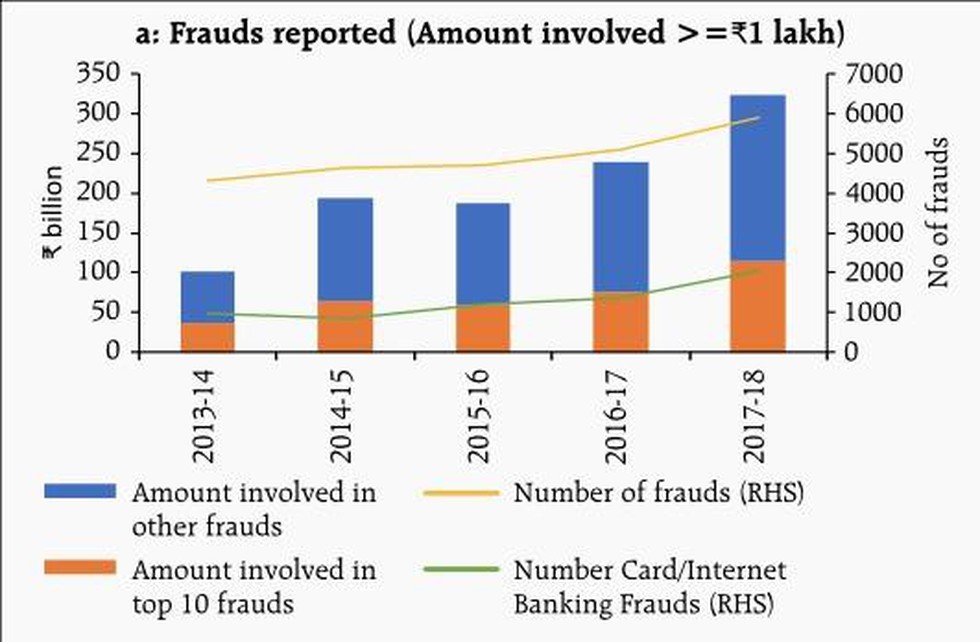
About:
- CVC has sub divided the study into 13 sectors comprising of Gems and Jewellery, Manufacturing, Agro sector, Media, Aviation, Service Sector, Discounting of cheques and bills, Trading sector, IT Sector, Exports sector, Fixed deposits and Demand Loan etc.
- With a view to maintaining discreteness, the names of borrower accounts/entities and the names of the Banks have not been disclosed in the report.
- However, various industry specific suggestions for systemic improvement have been given in the final report such as strengthening of SOPs, monitoring system and highlighting the role of controlling offices, so as examine the aspect of quality of business.
- This analytical study was initiated by the Commission as a Preventive Vigilance measure so as to minimize the occurrence of such type frauds in future.
Prelims Pointers
Oct. 17, 2018

About:
- Meaning: A strategic petroleum reserve are essentially huge stockpiles of crude oil; an emergency store of crude oil to tide over severe supply shocks of this critical fuel.
- Global scenario: Many major global oil consumers such as the US, China and Japan have built massive strategic reserves of oil over the years, with India following up.
- Indian Strategic Petroleum Reserves Ltd (ISPRL): It is a special purpose vehicle under the Oil and Gas Ministry for constructing strategic petroleum reserves in India.
- List of strategic petroleum reserves in India:
- ISPRL has constructed three strategic petroleum reserves at Visakhapatnam on the East Coast, and at Mangaluru and Padur on the West Coast. These facilities, with total capacity of 5.33 million tonnes, can meet 10 days of India’s crude oil requirements.
- In July 2018, the government approved the construction of two more reserves at Chandikhol in Odisha and Padur in Karnataka, having an aggregate capacity of 6.5 million tonnes. The new facilities can provide additional supply for about 12 days.
- ISPRL has constructed three strategic petroleum reserves at Visakhapatnam on the East Coast, and at Mangaluru and Padur on the West Coast. These facilities, with total capacity of 5.33 million tonnes, can meet 10 days of India’s crude oil requirements.
- Significance:
- India is the world’s third largest energy consumer after the US and China. But India is dependent on imports for more than 80 % of her energy needs.
- The bulk of this oil is imported from West Asia which is often in the midst some geo-political standoff, thus making them unreliable in a conflict scenario.
- Also, there’s always the risk of supply disruption from natural disasters, war or other calamities.
- In short, Strategic petroleum reserves add a necessary layer to India’s energy security.
- India is the world’s third largest energy consumer after the US and China. But India is dependent on imports for more than 80 % of her energy needs.
- Way ahead: The global practice is to maintain strategic reserves of at least 90 days of oil imports. Thus, India has a long way to go.
Prelims Pointers
Oct. 17, 2018

About:
- Reserve Bank of India (RBI) has released rules on interoperability of Prepaid Payment Instruments (PPIs)
- Interoperability allows compatibility between payment systems and once implemented, a user will be able to transfer funds between mobile wallets and also from their wallets to bank accounts.
- These rules do not force PPIs such as wallets to permit such transfers; instead, these guidelines are for “participating PPI issuers, who choose to adopt interoperability”.
- In cases where PPIs are issued in the form of wallets, interoperability across PPIs shall be enabled through unified payments interface (UPI). Where PPIs are issued in the form of cards, the cards shall be affiliated to the authorized card networks.
Unified payments interface (UPI)?
· UPI is a payments system launched by the National Payments Corporation of India in 2016.
· It facilitates instant fund transfer between two bank accounts on the mobile platform, without having to provide any detail of the beneficiary’s bank account.
Oct. 16, 2018
Prelims Pointers
Oct. 16, 2018
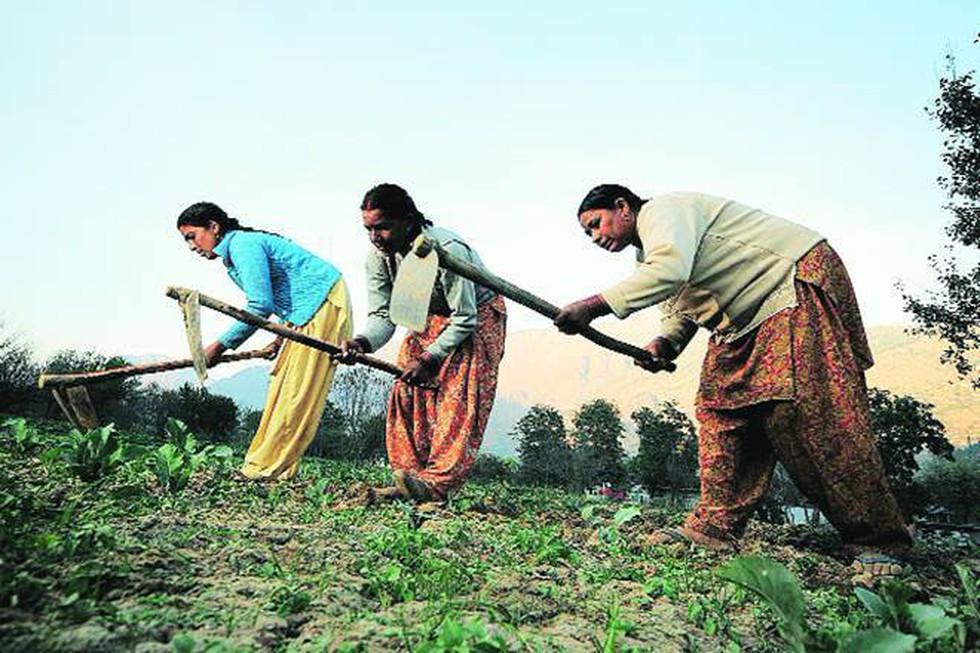
Overview of women in agriculture:
- About 18% of the agricultural households in India are led by women.
- In addition to agriculture, women have been making exceptional contribution in horticulture, fisheries, animal husbandry, beekeeping etc.
- A research by the Indian Council of Agricultural Research (ICAR) conducted in nine states shows that the participation of women is 75% in the production of major crops, 79% in horticulture, 51% in post-harvest work and 95% in animal husbandry and fisheries.
- A National Gender Resource Centre in Agriculture, set up in the Department of Agriculture Cooperation & Farmers Welfare, has developed a women sensitization module to bring about change in the mindset of male program operators.
- In 2017-18, DAC&FW’s MANAGE, EEI, SAMETI and other institutions have trained 5645 people through 222 programmes. Besides, more than 14 lakh women farmers have been trained so far under the ATMA scheme.
- The inter-ministerial committee formed under the chairmanship of Dr. Dalwai has written a separate chapter on the empowerment of women to double the income of farmers.
- The Central Institute for Women in Agriculture, Bhubaneswar (Odisha), set up under the ICAR, has also been working in this direction.
- Under the National Cooperative Union of India (NCUI), 38.78 lakh women have been trained in the last two years. Similarly, 6.07 lakh and 7000 women have benefited through KVKs and skill training respectively.
- The government has allocated more than 30% funds for women under various major schemes in order to bring women in the agriculture mainstream.
Prelims Pointers
Oct. 16, 2018
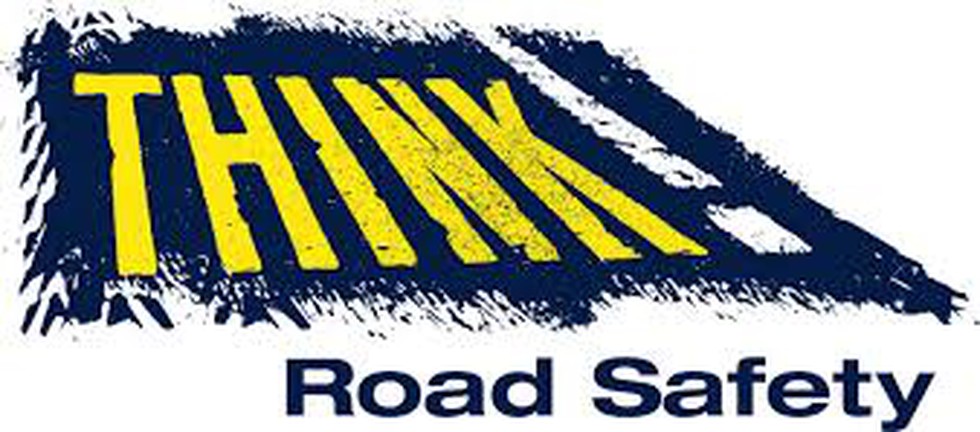
About:
- The programme is a PPP initiative to be run in collaboration with Diageo India and the Institute of Road Traffic Education (IRTE), and attempts to bring a formal and structured training program for young, first-time drivers as they apply for learner’s license.
- This programme will help the Government achieve its target of reducing road accidents by 50 percent by 2020.
- India accounts for 12.5 % (over 1.45 lakh fatalities a year) of global road accidents, with one road accident occurring every four minutes.
- Alarmingly, 72 % victims involved in such road mishaps are between the age groups of 15-44 years with speeding, reckless and drunk driving being the top reason accounting for 1.5 % of road traffic accidents and 4.6 % of fatalities.
Prelims Pointers
Oct. 16, 2018
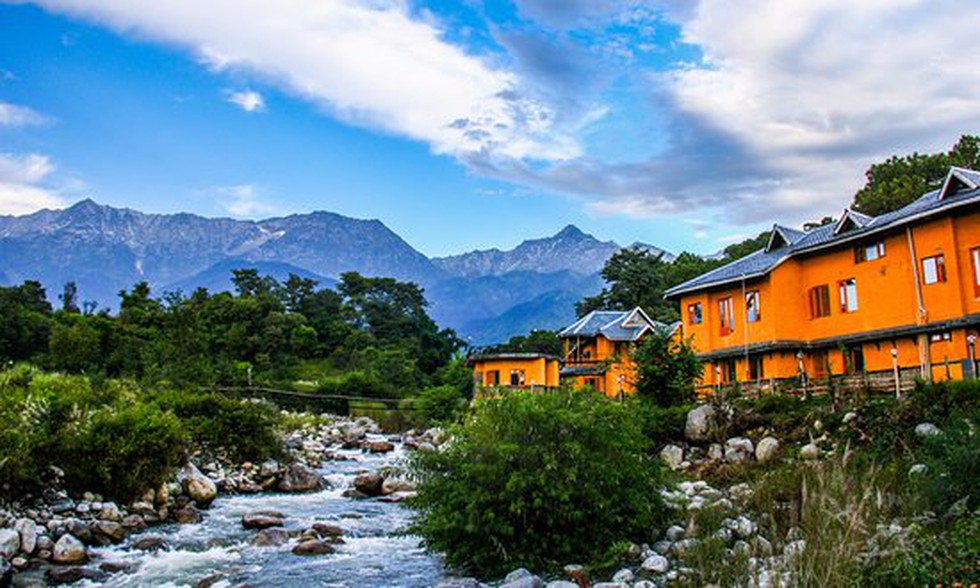
About:
- Objective of the programme ‘PRAKRITI’:
- To promote awareness about forests and environment,
- To stimulate interest among the students of NVS and KVS in maintaining a balanced environment and society,
- To provide a platform to school children to learn practical skills towards judicious use of our resources and
- To mobilize a cadre of youth for raising a peoples’ movement committed to conservation of forest and environment.
- To promote awareness about forests and environment,
- Features:
- Through this collaboration, knowledge will be imparted to students/teachers of NVS and KVS on environment, forest, environmental services and contemporary areas of forestry research by way of lectures and interactive sessions by scientists of ICFRE institutes.
- Visits of students/teachers of NVS and KVS schools will also be arranged to the laboratories and field/experiments of ICFRE institutes for hands-on experiences.
- Through this collaboration, knowledge will be imparted to students/teachers of NVS and KVS on environment, forest, environmental services and contemporary areas of forestry research by way of lectures and interactive sessions by scientists of ICFRE institutes.
- Duration: The MoUs are signed for a period of 10 years.
- Indian Council of Forestry Research and Education (ICFRE), Dehradun: It is an autonomous Council under the Ministry of Environment, Forest and Climate Change. ICFRE, through its nine Institutes and five Centres located across the country, is guiding, promoting and coordinating forestry research, extension and education at the national level.
- Navodaya Vidyalaya Samiti: It was established with the primary objective to provide modern quality education to talented children, predominantly from the rural areas, without regard to their family’s socio-economic condition. At present, it has 660 functional residential schools.
- Kendriya Vidyalaya Sangathan: It was established in 1963 to provide uninterrupted education to wards of the transferable Central Government employees. KVS established Kendriya Vidyalayas all over the country to impart quality education, promotion of national integration, adventure activities, physical education etc.
Prelims Pointers
Oct. 16, 2018
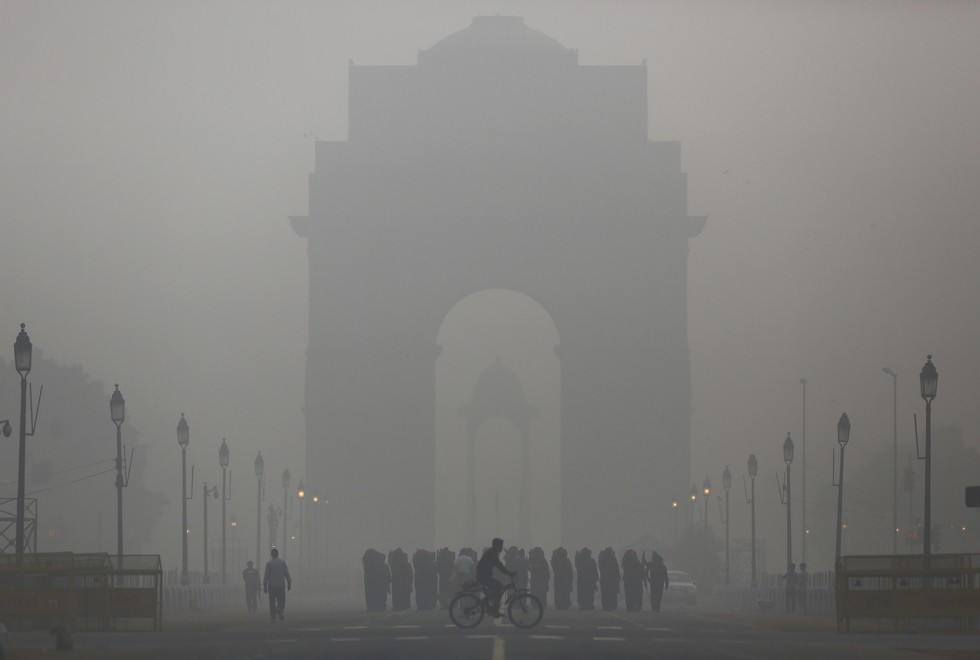
About:
- Objective: The early warning system will help in proactively forewarning, 3-4 days in advance, any large scale air pollution events which may occur over the Delhi region and give alerts to take necessary steps as per Graded Response Action Plan (GRAP) of the Government of India.
- Bodies involved: The air pollution system has been developed jointly by the scientists at Indian Institute of Tropical Meteorology (IITM), Pune, India Meteorological Department and National Centre for Medium Range Weather Forecasting (NCMRWF).
- Components: The warning system consists of –
- real time observations of air quality over Delhi region and details about natural aerosols like dust (from dust storms) and particulate matter using different satellite data sets
- Predictions of air pollutants from two different air quality prediction systems based on state-of-the-art atmospheric chemistry transport models and
- Warning Messages and Alerts and Bulletins.
- real time observations of air quality over Delhi region and details about natural aerosols like dust (from dust storms) and particulate matter using different satellite data sets
Prelims Pointers
Oct. 16, 2018
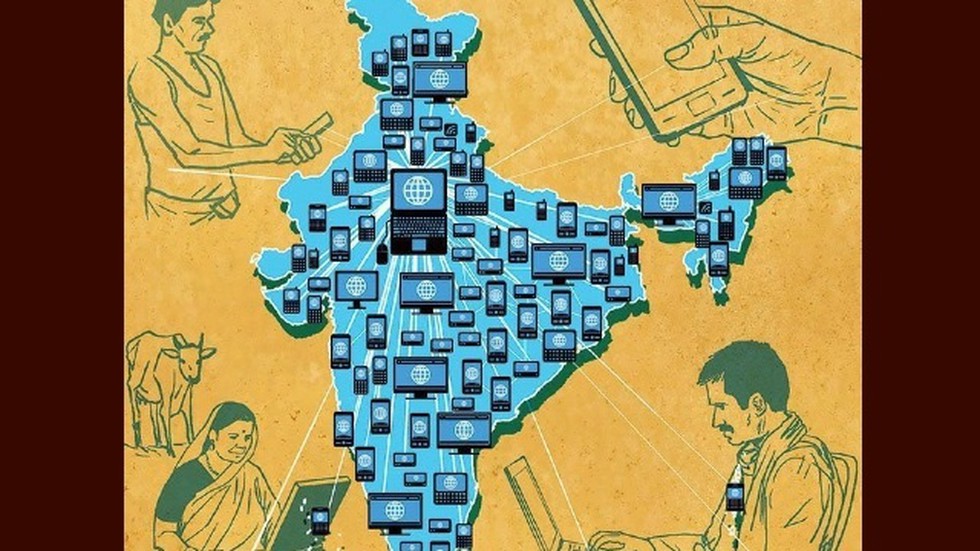
About:
- Objective of Bharat Net project: Digitally connecting all 2,50,000 Gram Panchayats (GPs) in the country to facilitate the delivery of e-governance, e-health, e-education, e-banking and other services to citizens in every part of our country, on a non-discriminatory basis.
- Implementation: Bharat Broadband Network Limited (BBNL) has played a key role in leading the successful implementation of the BharatNet project.
- Phases:
- Phase I: The target of completing 1,00,000 GPs under phase-I of BharatNet was achieved in December 2017.
- Phase ll: BharatNet Phase-II is planned to connect the remaining 1,50,000 GPs, using an optimal mix of media, by 31 March, 2019. Phase II is being implemented through three models – state-led model, CPSU model, and private sector model.
- Phase I: The target of completing 1,00,000 GPs under phase-I of BharatNet was achieved in December 2017.
Prelims Pointers
Oct. 16, 2018
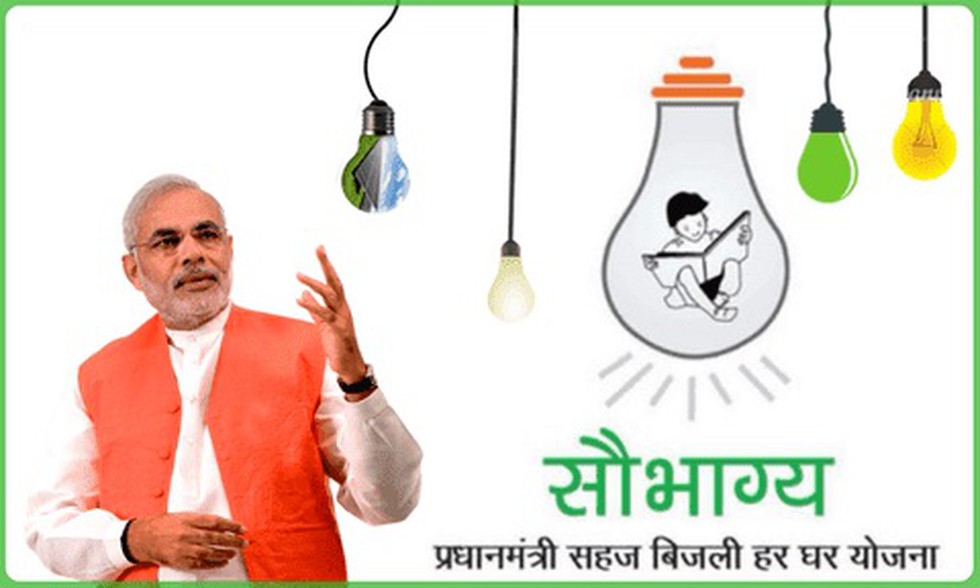
About:
- Criteria: Awards would be provided for achieving 100 % household electrification at DISCOM/Power Department level of the States.
- Eligibility: Eight States which have already achieved more than 99 % household electrification prior to launch of Saubhagya, are ineligible for participation under the award scheme. All the remaining States and their Discoms are eligible for the award.
- Categories: Award will be given in three categories,
- DISCOMs / Power Departments of Special Category States (which includes seven North Eastern States, Sikkim, J&K and Uttarakhand);
- DISCOMs / Power Departments of other than Special Category States (which includes Bihar, Chhattisgarh, Jharkhand, Karnataka, Madhya Pradesh, Maharashtra, Odisha, Rajasthan, Telengana, Uttar Pradesh and West Bengal)having more than 5 Lakh un-electrified households and
- DISCOMs / Power Departments of other than Special Category States having less than 5 Lakh un-electrified households.
- DISCOMs / Power Departments of Special Category States (which includes seven North Eastern States, Sikkim, J&K and Uttarakhand);
- Government of India launched ‘Pradhan Mantri Sahaj Bijli Har Ghar Yojana’ (Saubhagya) in Sept. 2017 to achieve the goal of universal household electrification in the country by 31st March 2019.
- The scheme envisages to provide last mile connectivity and electricity connections to all remaining households in rural as well as urban areas.
- With the support of State Power Departments and DISCOMs more than 1.65 Crore households have already been connected since the launch of scheme.
Prelims Pointers
Oct. 16, 2018

About:
- The new British law seeks to hold to account “politically exposed persons” such as politicians and civil servants who are not citizens of the European Economic Area (EEA) and other individuals suspected of getting their wealth through serious crime.
- The law, incorporated earlier this year as part of the UK’s Criminal Finances Act, 2017, allows authorities to seize assets over £50,000 (about Rs 49 lakh) that are suspected to be proceeds of corruption or organised crime.
- An Unexplained Wealth Order (UWO) issued by a court can be used to force suspects to reveal the sources of their wealth.
- The UWO law is significant because of the UK’s reputation for providing a relatively easy path to laundering stolen money. In a special report in April, the Financial Times said a popular estimate puts “the amount concealed in the UK each year (at) £90 billion”.
Prelims Pointers
Oct. 16, 2018
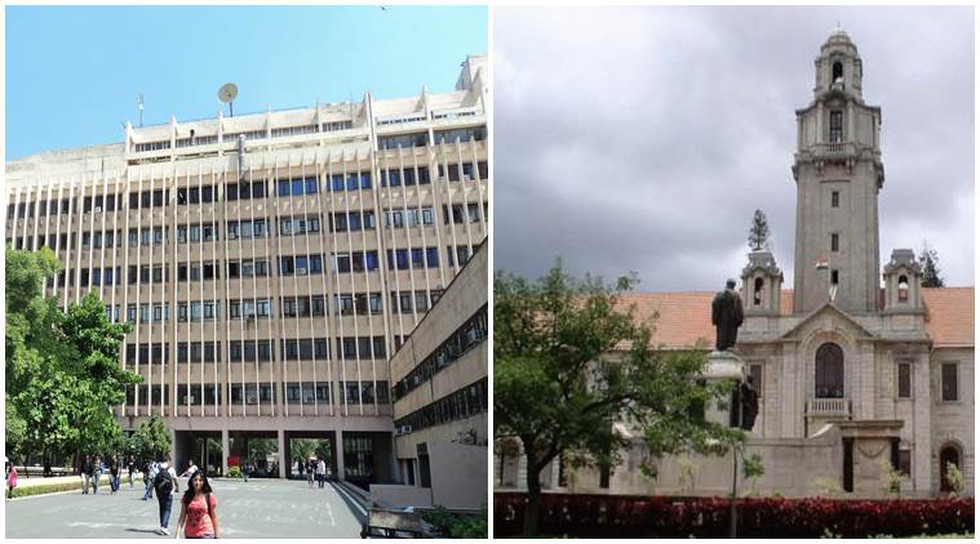
About:
- Objective: The inaugural edition of the QS India University Rankings, is designed to offer an independent analysis of the performance of Indian institutions.
- Coverage: The rankings include Public Universities, Private Universities and H.E. Institutions or Deemed Universities. Single faculty specialist institutions or single level institutions (e.g. teaching principally at postgraduate level) are not included.
- Rankings: IIT Bombay is named India's leading institution. IITs take up seven of the top-10 places. IISc Bangalore ranks second and IIT-Madras third.
- Methodology: Institutions have been scored on academic reputation (30 %), employer reputation (20 %), faculty-student ratio (20 %), proportion of staff with PhD (10 %), papers per faculty from Scopus database (10 %), citations per paper from Scopus database (5 %), proportion of international students (2.5 %) and proportion of international faculty (2.5 %).
Prelims Pointers
Oct. 16, 2018

About:
- At present defamation is both a
- civil wrong (under it, person can be sued for monetary compensation) and
- criminal offence Sections 499 and 500 in the IPC, 1860 (it invites imprisonment up to two years).
- civil wrong (under it, person can be sued for monetary compensation) and
- Petitions have been filed to decriminalize defamation.
- Arguments against criminal defamation: UN Special Rapporteur on freedom of expression has told states to abolish it as it –
- intimidates citizens,
- dissuades them from exposing wrongdoing,
- is against their democratic opinion
- has Potential to be Misused by govt. to curb criticism by media and political opponents. E.g. In May 2015, Delhi CM told his departments to file cases against news items which are defaming him.
- intimidates citizens,
- Grounds cited by Centre in SC in July 2015 to justify the continuance of Sections 499 and 500 of IPC –
- citizens are unlikely to have enough liquidity to pay damages for civil defamation;
- online defamation in the Internet age can be countered only by making it a criminal offence,
- constitutionally valid as defamation is a “reasonable restriction” under A-19 (2)
- Criminalizes only those speech having no social utility, only aim is harm reputation
- Need to protect the right to live with dignity of citizens under Article 21
- there are safeguards in Section 499 to prevent misuse
- Sections 499 and 500 are not vague
- Mere possibility of abuse cannot be a ground to strike down law
- citizens are unlikely to have enough liquidity to pay damages for civil defamation;
Prelims Pointers
Oct. 16, 2018
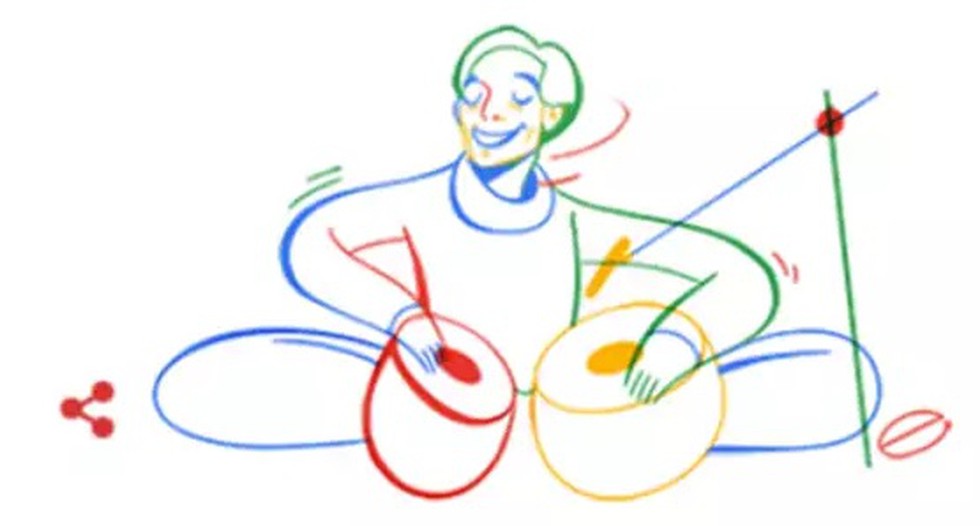
About:
- Lakshmi Narayan Singh (1944 – 2016), known professionally as Lachhu Maharaj was an Indian tabla player of Benaras gharana.
- Brought up in Varanasi, the tabla maestro started performing at the age of 8 and trained under his father Vasudev Maharaj. He worked in many Bollywood films and performed across the world.
- Awards:
- In 1957, he was honoured with the In 1957, he was honoured with the Sangeet Natak Akademi award, the highest award for performing artists.
- During Emergency, Maharaj played the tabla inside prison as a mark of protest and refused to accept any award bestowed on him including the Padma Shri and other state awards.
- In 1957, he was honoured with the In 1957, he was honoured with the Sangeet Natak Akademi award, the highest award for performing artists.

